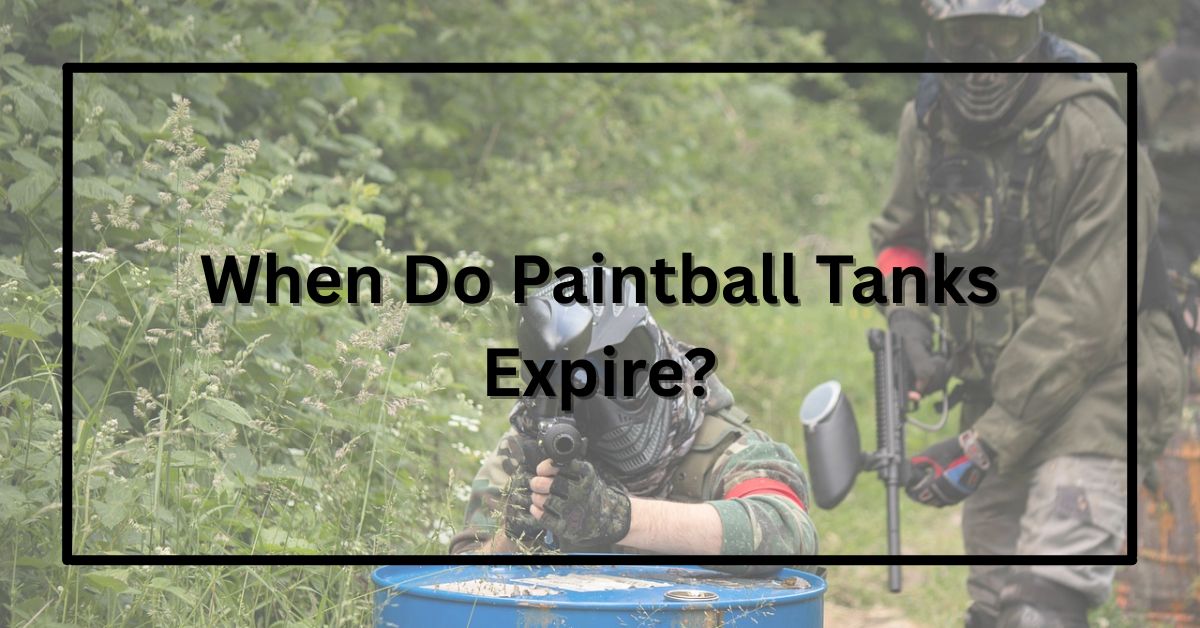If you’re a regular paintball player or just starting, understanding your gear is essential—especially your paintball tank. These high-pressure vessels are critical to gameplay and, more importantly, safety. One of the most frequently asked questions is:
“When do paintball tanks expire?”
In this guide, we’ll break down tank expiration dates, hydro testing rules, and how to make sure your tank stays safe and legal on the field.
Types of Paintball Tanks

There are two main types of paintball tanks used today:
A. Aluminum Tanks
- Pressure Rating: 3000 PSI
- Pros: Affordable and durable
- Cons: Heavier than carbon fiber
B. Carbon Fiber Tanks
- Pressure Rating: 4500 PSI
- Pros: Lightweight, high capacity
- Cons: More expensive, shorter lifespan
The type of tank you use directly affects how long it will last and how often it needs inspection.
What Is Hydrostatic Testing?
Hydrostatic testing, or hydro testing, is a process used to ensure your tank can safely handle high-pressure air without leaking or rupturing.
Key points:
- A certified technician fills the tank with water and applies pressure to test its strength.
- A passed hydro test means the tank is safe for continued use.
- A failed hydro test or an expired date means the tank must be retired.
You can find the hydro test date and manufacture date stamped on the tank’s neck or label.
When Do Paintball Tanks Expire?
Expiration depends on the tank material and testing intervals.
Aluminum Tanks
- Hydro Testing Required Every 5 years
- Total Lifespan: Usually 10–15 years
- After 10+ years, some fields may no longer refill them—even with a valid test.
Carbon Fiber Tanks
- Hydro Testing Required Every 5 years
- Total Lifespan: 15 years from the manufacture date
- Important: After 15 years, carbon fiber tanks cannot be recertified and must be discarded.
How to Read Tank Dates?
Check for these details:
- Manufacture Date: Often listed as “MFG 03/2020” (March 2020)
- Hydro Test Date: Usually appears as “03/25” (valid until March 2025)
- Re-Test Stamp: After testing, a new date is stamped to show compliance
Make sure your hydro test is current before heading to the field. Most paintball fields will not fill tanks past their hydro date.
Signs Your Tank Should Be Replaced
Even if your tank hasn’t hit the expiration date, you should replace it if you notice:
- Dents, cracks, or corrosion
- Worn or leaking regulator
- Peeling fiber wrap (on carbon tanks)
- Expired hydro test date
Remember: Your safety depends on the condition of your tank.
What Happens If a Tank Is Expired?
Using an expired tank can be dangerous and illegal in regulated fields. Here’s what you can expect:
- Field Rejection: Most paintball fields will not fill an expired tank
- Potential Fines: If used in a commercial or competition setting
- Disposal Required: Tanks should be properly depressurized and recycled
Never try to refill or use a tank past its legal lifespan.
How to Extend the Life of Your Paintball Tank?
Proper care can maximize your tank’s lifespan and performance.
- Store in a cool, dry place (avoid direct sunlight)
- Avoid overfilling or dropping the tank
- Inspect regularly for damage or wear
- Schedule hydro tests every 5 years (mark your calendar!)
Maintaining your tank keeps you safe—and protects your investment.
Conclusion: Know Your Tank’s Limits
Your paintball tank is more than just a power source—it’s a critical safety component. Whether using an aluminum tank or a carbon fiber HPA tank, knowing the expiration date and staying on top of hydro testing is essential.
- Aluminum tanks typically last up to 15 years, with hydro testing every 5 years
- Carbon fiber tanks must be retired after 15 years, with no exceptions
- Always check your tank’s manufacture and hydro dates before use
Keeping your tank up to date means fewer surprises at the field and more time doing what you love—playing paintball safely and confidently.

